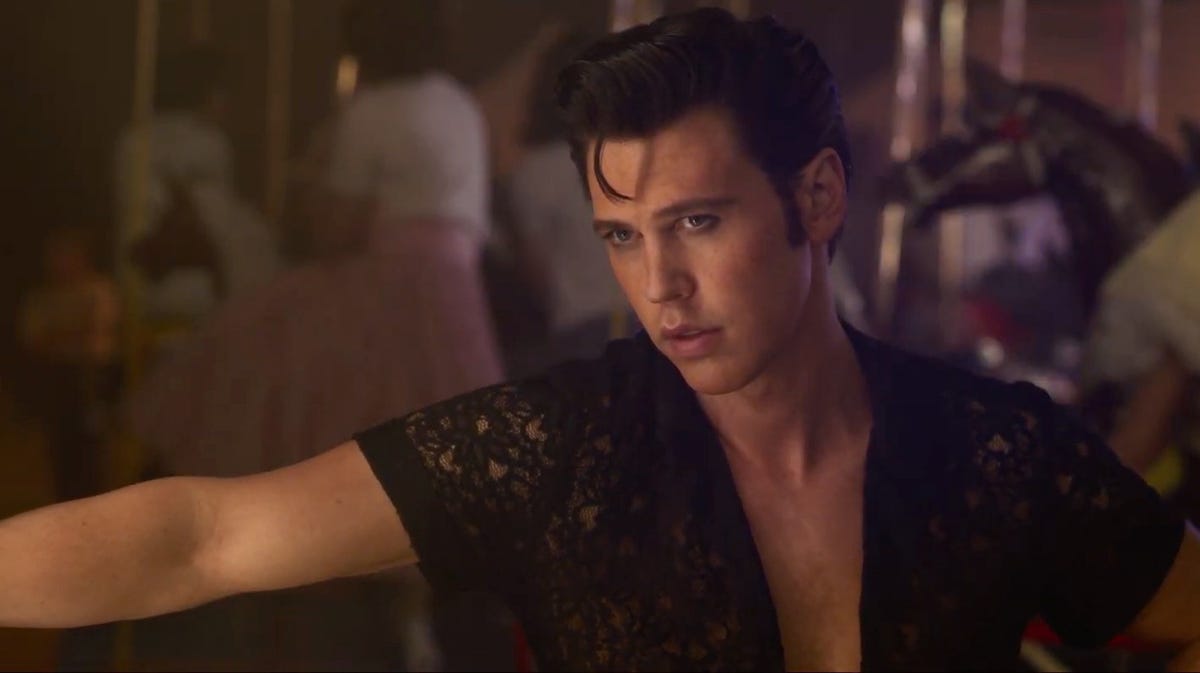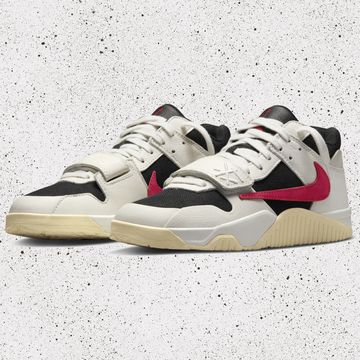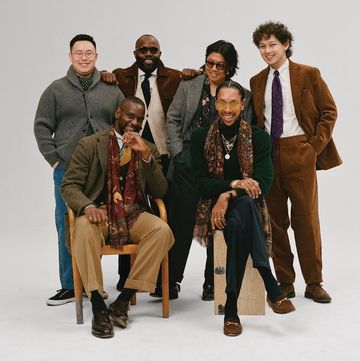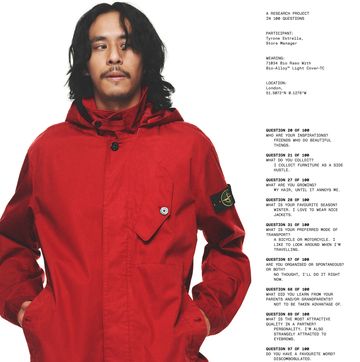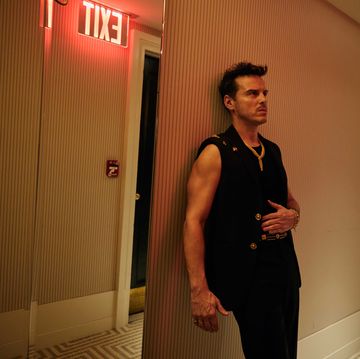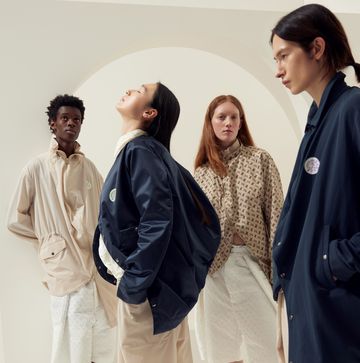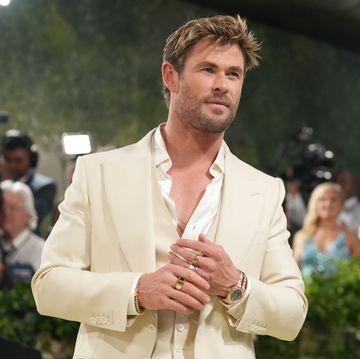“They ask me why I wear the clothes I do,” Elvis Presley told Elvis Answers Back magazine in 1956. “What can I say? I just like nice clothes, that’s all. I like colour and such. Is there something wrong with that?”
Elvis, buddy: nothing at all. Needless to say, the task of recreating one of the 20th century’s greatest wardrobes – and of turning Austin Butler into Elvis in Baz Luhrmann’s new and extremely Baz Luhrmann biopic of The King – is a sizeable one.
“It wasn’t enough to slavishly make Austin look like a carbon copy of Elvis,” Elvis’ costume and production designer and producer Catherine Martin says. “That tended to suck the soul out of the man that Austin was trying to portray.”
The production had access to the Graceland archives, and though nothing original ended up on screen – “they’re like relics” – Martin and her team had the chance to colour-match original pieces and take copious notes. Gene Doucette, who embroidered Presley’s original Vegas-era jumpsuits, was on hand to recreate her original designs too.
Most moving, though, were Elvis’ mother Gladys’ clothes. “They were all laid out in cardboard archive boxes with tissue paper, but when you opened the boxes you just felt this overwhelming sadness coming out of the box. It was just an insight into who she was. And the simplicity and threadbareness of her clothes – like she’d never gotten over the poverty she lived in. It was really moving.”
Presley’s manager Colonel Tom Parker capitalised on his charge’s fame with tie-in merchandise: brooches, badges, lockets, bracelets. To Gladys they were a way of clinging onto the son.
“She kept them and wore them. There’s just something so heartbreaking about that.”
Which look are you most pleased with, and what were you trying to communicate with it?
We’re so aware of Elvis’ style it’s sort of become the vernacular for the Fifties. So, it’s in no way as shocking or rebellious or as punk [as it appeared at the time]. Elvis was incredibly shocking. He was incredibly sexual. He connected and caused a youthquake. The way he dressed and moved and portrayed himself on stage was incredibly shocking and confrontational. There was a blatant sexuality that had never had that much exposure to all of these young people.
So Baz was really focused on finding a translation for all this in the Fifties that still connected to the history of Elvis and his clothes, and what it felt like to see him at the time. And so even though it’s simple – there are four pieces, two fronts, two backs, pocket bags, belt loops, zipper and a button – the pants took a long time to work on. You had to find exactly the right drape of fabric, the width of the leg, the taper to the bottom, so that when he did ‘the wiggle’, that sensuality and sexuality was apparent.
Those trousers really do a lot of, erm, heavy lifting.
They do, don’t they?
There’s quite a lot of Elvis to see, put it that way.
We spent a long time on [the trousers]. Even though it seems quite simple, it’s so hard. I always think it’s the simplest things, because there’s nowhere to hide, that are the most complicated.
Are there any details you’re particularly pleased with?
I think my favourite little Easter egg is in the Russwood scene, if you look at all the archival photos you’ll notice that for some unknown reason both Tom Diskin and Tom Parker are wearing identical shirts. In the movie I copied the shirts identically. I just thought it was so weird that that would happen! It just shows how kooky Colonel Tom Parker is. There’s lots of famous [photographer Alfred] Wertheimer pictures of them on the train from New York after Steve Allen [Presley had sung ‘Hound Dog’ to a basset hound on national TV], and Tom Parker’s on the train and he’s wearing the same suit on the train as he is at Russwood. And I was thinking, maybe they just didn’t have any clean clothes and when they got to Memphis they thought, “We’re gonna have to go to the shop”. And he just bought two shirts in different sizes.
What were the main challenges of getting the Vegas jumpsuits right? It looks like an enormous amount of work.
We were lucky. I saw a copy of the ’68 comeback special white gospel suit in the [Graceland] gift shop and I thought, ‘That’s pretty good’. So I looked in the label and it was a company called B&K Enterprises. Anyway, I went on a long journey to read up about them, but basically this couple over the years had befriended all the stakeholders in the original jumpsuits – whether it was Bill Belew who was the designer at NBC on the ‘68 special who worked on the Napoleon collar with Elvis and went on to design his jumpsuits, his assistant Gene Doucette who did embroidery and designed some of the motifs and did the studding on the suits, or the beltmaker, or the tailor who actually put it together – they had many many years ago befriended, asked permission, collected this authentic know-how.
So eventually I went to Indiana and met with them and asked them if they’d be willing to work with us. They were an incredible resource on the jumpsuits. They actually know when he wore every last thing. In our movie we jump around a bit, but we're not trying to be a documentary – we're trying to tell a story. Did we change things in terms of fit and in terms of proportion, just to bring that synthesis of Elvis-Austin? Yes, absolutely. But it was great to be able to get to the roots of the look.
Elvis is in cinemas this Friday

